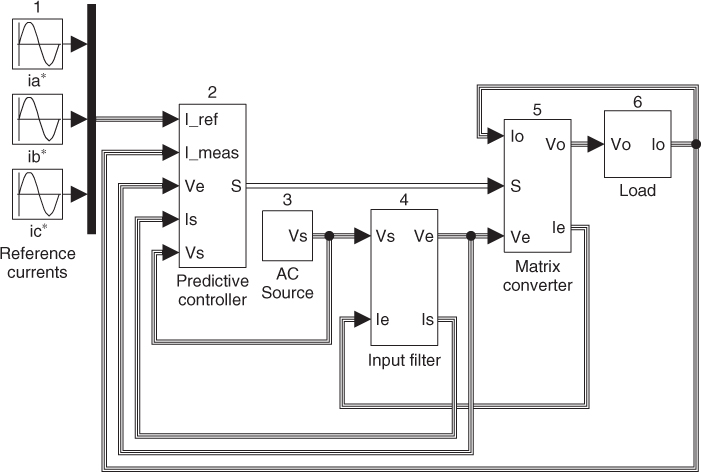C.1 Predictive Current Control of a Direct Matrix Converter
As mentioned in Chapter 7, the matrix converter (MC) consists of an array of bidirectional switches, which are used to directly connect the power supply to the load without using any DC-link or large energy storage elements. Also, this is a more complex topology with respect to the three-phase voltage source inverter; throughout its simulation and predictive control algorithm implementation it will be demonstrated that this method can be applied easily to this converter.
Figure C.1 shows the MATLAB®/Simulink® model used for simulation of the predictive current control of the direct MC described in Chapter 7. The simulation diagram is composed of six major elements: the references, predictive control algorithm, and AC-supply, input filter, converter, and load models. The three-phase output current references are generated by sine wave sources (block 1), which are configured with the desired peak amplitude, frequency, and phase angle.
Figure C.1 Simulink model for simulation of predictive current control of a MC

The core of the predictive control algorithm is implemented in an embedded MATLAB function (block 2) whose inputs are the grid voltages and currents, capacitor voltages, measured load currents, and reference load currents. The reference of the instantaneous reactive power is set to zero in order to have zero instantaneous ...
Get Predictive Control of Power Converters and Electrical Drives now with the O’Reilly learning platform.
O’Reilly members experience books, live events, courses curated by job role, and more from O’Reilly and nearly 200 top publishers.

